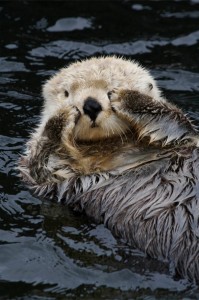I was pleased to have the opportunity to host Richard Hutton and LeeAnne French, the Executive and Associate Directors of the Carsey-Wolf Center and two of the minds behind the Blue Horizons film program, for a Roundtable last week. It was very fun to be able to show this year’s Blue Horizons films for the NCEAS community, and especially great to join into the conversation that we had with Richard and LeeAnne.
Richard and LeeAnne shared some great advice for those of us interested in communicating the science relevant to environmental issues, several of the things they mentioned really stuck in my mind. We discussed:
- the importance of knowing your audience and tailoring your message for the particular audience you’re trying to reach
- the way a nuanced presentation of a variety of cultural, societal, economic, etc. perspectives on an environmental issue can help the audience move beyond their established positions and engage more deeply with inherent complexities and competing points of view
- the powerful and honest way people can express their thoughts and feelings about an issue when trust between interviewer and interviewee has been established
- the importance of casting when creating environmental media
- the value of storytelling as a communication approach
Richard also recommended a book for those interested in learning more about how to improve communication through storytelling: The Storytelling Animal by Jonathan Gottschall. If any of you are planning to read it (I am) and would like to discuss afterward, please let me know and I’d be happy to join you.
Thank you, Richard and LeeAnne, for taking the time out to talk with us! We appreciate your willingness to share some practical tips we can use as we think about how to improve our communication efforts.


And just in case you were wondering what happened with the ‘No Otter Zone’: http://www.nytimes.com/2012/12/21/science/earth/policy-lifts-otter-free-zone-in-california.html?_r=0
*Thanks so much for the link to the book Richard mentioned, Stacy! It was a really fun and lively discussion!